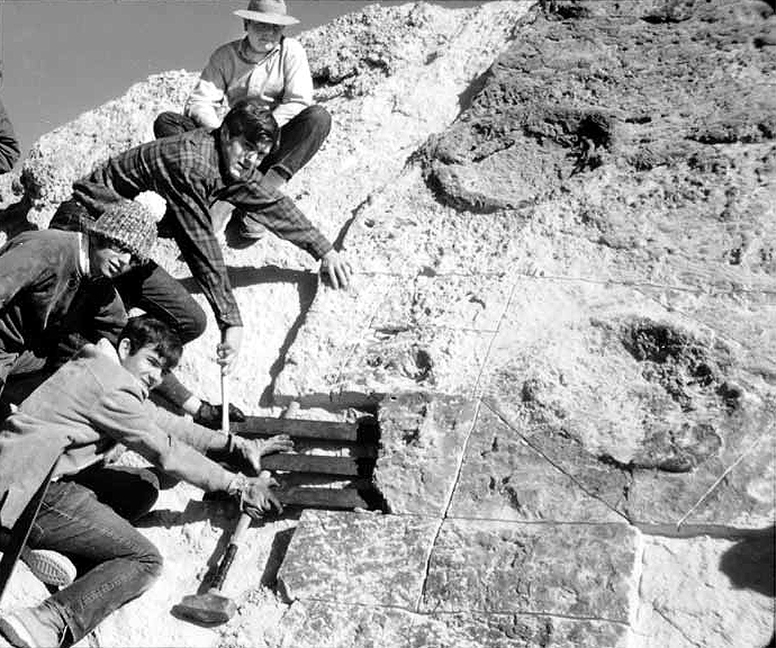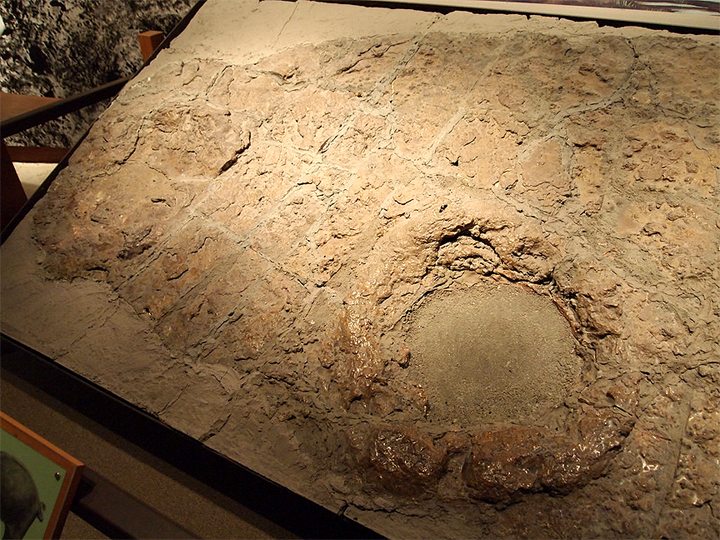| Here is the same proboscidean footprint near
the top of the year 1969 photograph, above, as observed on September
11, 2010--now re-assembled and on display in a museum. It's the
large circular depression situated at lower right, preserved
on a bedding plane of volcanic tuff from the middle Mioence Barstow
Formation, a tuff radiometrically dated at 14.8 million years
old--hardened pyroclastic material deposited into clear lake
waters whose normal freshwater alkalinity was interrupted on
occasion by evaporative periods and enormous quantities of volcanic
ash ejecta which, eventually reworked by erosion and redeposited
as firm mudflats, provided a perfect medium (analogous to wet
concrete) to preserve the trackways of horses, camels, pronghorns,
gomphothere proboscideans, and bear-dogs. The trackways are now
found along the tilted and folded bedding planes of those lithified
volcanic tuffs. Photographed on September 11, 2010, by an individual
who goes by the cyber-name coolislandsong24. |

